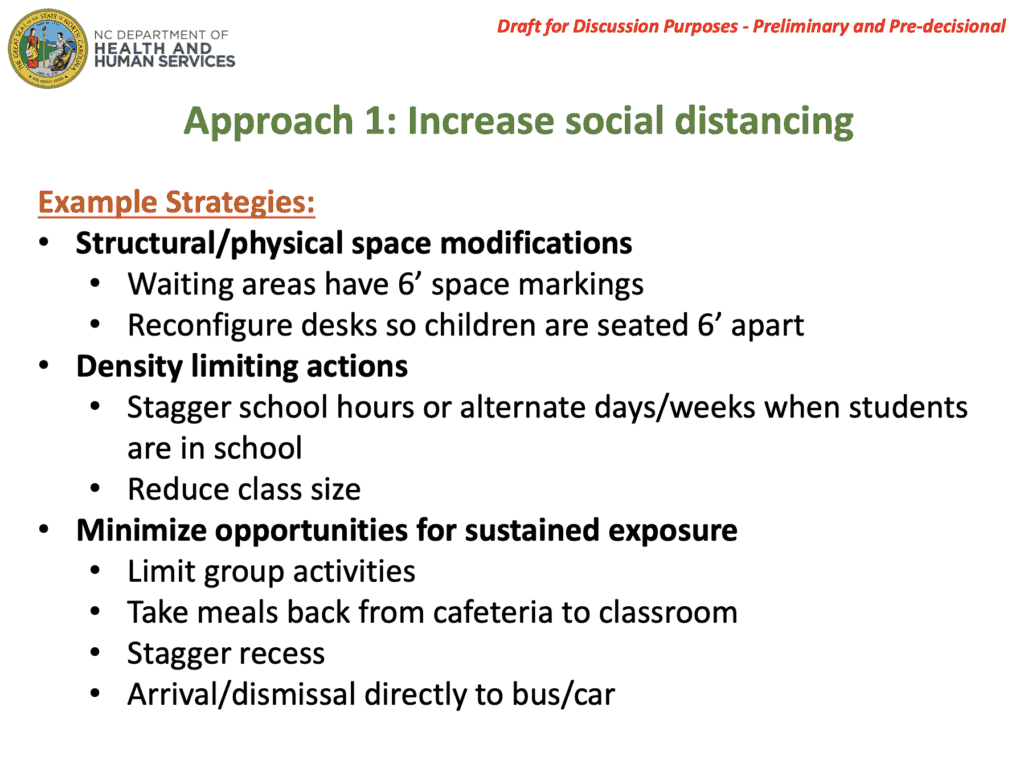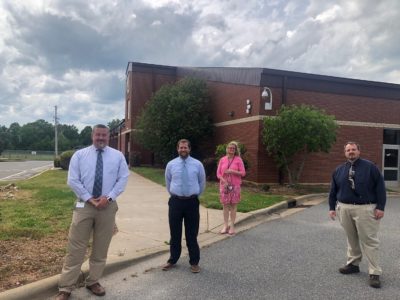
The education working group of the House Select Committee on COVID-19 met today to look at issues surrounding child nutrition, internet connectivity, and concerns over reopening schools in the fall.
The meeting comes just prior to lawmakers returning to Raleigh on Monday, May 18 for a continuation of the 2020 short session of the General Assembly.
COVID-19 and school nutrition
Lynn Harvey, chief of school nutrition services at the state Department of Public Instruction, gave lawmakers a broad look at child nutrition in North Carolina and how schools are addressing it during COVID-19.
Even before the pandemic, Harvey said that North Carolina had a big problem with food insecurity. The state is one of a relatively small number of states with food insecurity rates higher than the national average.

In ordinary times, Harvey said that almost 60% of the state’s public school students – about 826,000 – qualify for free or reduced price meals, and 27.6% of students struggle with hunger.
“Under the epidemic, the reliance upon meals provided by schools is greater than ever,” she said.
Since schools closed, 18 million meals have been served to students. There have been 1,000 pick-up/drive-through meal sites and 2,100 school buses delivering meals, Harvey said.
“Instead of seeing children in a school cafeteria, we see children standing on the school bus stop … we see parents coming to the schools … we also are seeing a much welcomed support from our North Carolina National Guard … to provide meals across the board,” she said.
Harvey said there are more than 80 members of the National Guard helping with school meals.
Harvey said that waivers from the federal government have provided schools a lot of flexibility in providing meals, and distributors say there is a good supply of meals and they are willing to work with schools. However, food supplies are short in some areas, and increased funding will be needed to provide summer meals.

While school nutrition and transportation staff were considered essential personnel and could continue working during COVID-19, Harvey said that a large portion of staff took emergency leave and there is a limited number of staff available for meal preparation and distribution.
Harvey also explained the importance of school buses for delivering meals. Without them, the number of meals that can be provided would decrease from about 500,000 a day to 125,000-150,000 a day. She said funding will be needed to keep buses delivering meals.
Included in the COVID-19 relief package passed by the General Assembly recently was $75 million in federal funds for school nutrition. The State Board of Education will decide how that money is disbursed.
See Harvey’s complete presentation here.
COVID-19 and internet connectivity
Jeff Sural, director of the Broadband Infrastructure Office of the state Department of Information technology (DIT), talked about access to broadband internet and the homework gap.
The following map shows the estimated homework gap created when students need internet but don’t have adequate access to broadband. Darker shades indicate a higher percentage of K-12 students without a broadband subscription.

And the following map shows the percentage of students in North Carolina under 18 without access to a computer.

As of 2017, 75.8% of North Carolina households had broadband internet access, but only 59.4% had access at the 25/3 MBPS broadband speed standard, which is considered a minimum standard for broadband according to Sural.
DIT worked with The Friday Institute for Educational Innovation to conduct a survey of families across the state. In the survey, 90% of respondents had internet access. Sixty-seven percent of those without internet said cost was a factor. Sixty-seven percent of parents said they felt very comfortable using digital devices for work, and 55% of students said the same when it came to homework.
That survey contributed to a report from the Friday Institute and DIT released last year. It made the following recommendations for addressing the homework gap.
- “Create a grant program housed in NC broadband infrastructure office.
- Implement policies and programs that increase the availability, adoption, and use of broadband.
- Foster cross-sector collaborations and public-private partnerships to implement and sustain multi-faceted solutions.
- Continue to study the Homework Gap.
- Local governments and LEAs should continue to innovate and partner with the state
- Modify and update the survey instrument and its distribution.”
Sural also covered NC DIT’s immediate response and long-term plans to address internet access during the COVID-19 crisis.
Immediate response



Long-term plans


Below is the complete presentation from Sural.
Reopening schools amid COVID-19
Working group members also heard the public health perspective on reopening schools.
They heard from:
- Susan Perry, chief deputy secretary at the Department of Health and Human Services
- Beverly Emory, deputy superintendent of district support at the state Department of Public Instruction
- David Stegall, deputy superintendent of innovation at the state Department of Public Instruction
State Superintendent of Public Instruction Mark Johnson has created a task force to look at how to reopen schools safely. The following flow chart shows how the work of the task force is going to happen.

Stegall said that it’s not only reopening schools in fall that education leaders are worried about. Many schools need to reopen in June for some activities, including sports, and there are year-round schools that hope to open over the summer.
Perry said that the state Department of Health and Human Services is vetting preliminary guidance options on what to consider when talking about reopening schools. Things being reviewed include social distancing, cleaning and hygiene, monitoring students and staff, protecting high-risk populations, and educating students and staff.
“There’s a lot more work that needs to be done, because while we have some good ideas from the public health side … the implications for schools, we realize, are massive,” she said.
She went through different possible approaches addressing some of these areas.




Here is the full presentation.
Recommended reading



